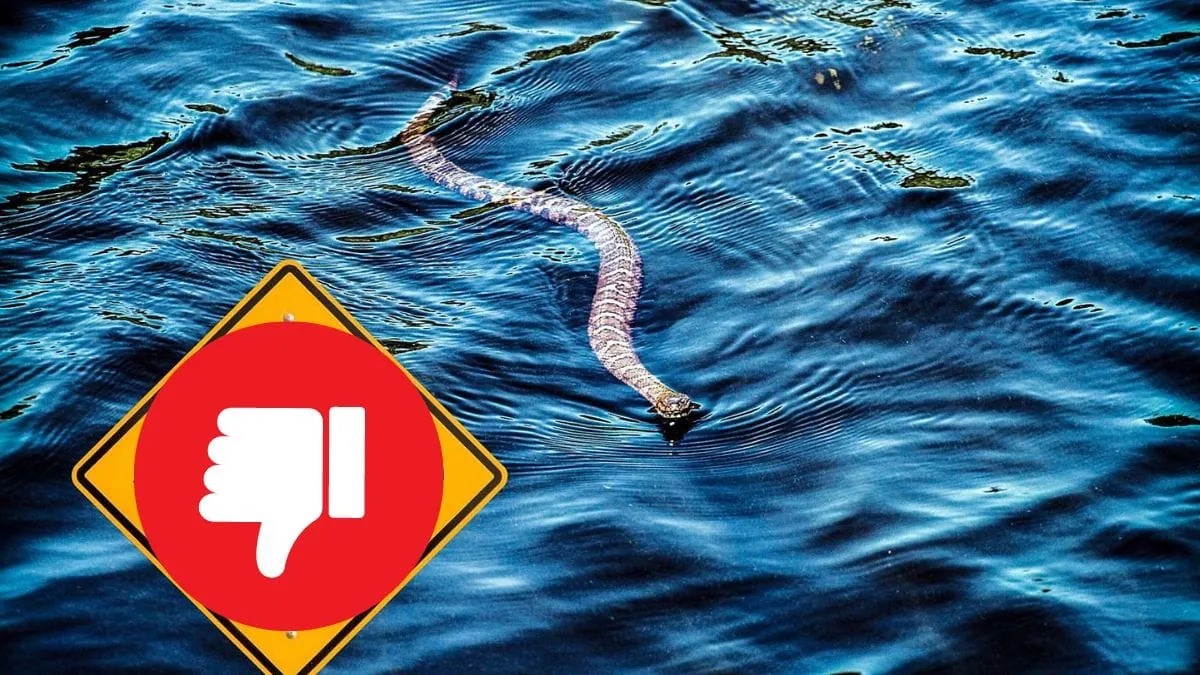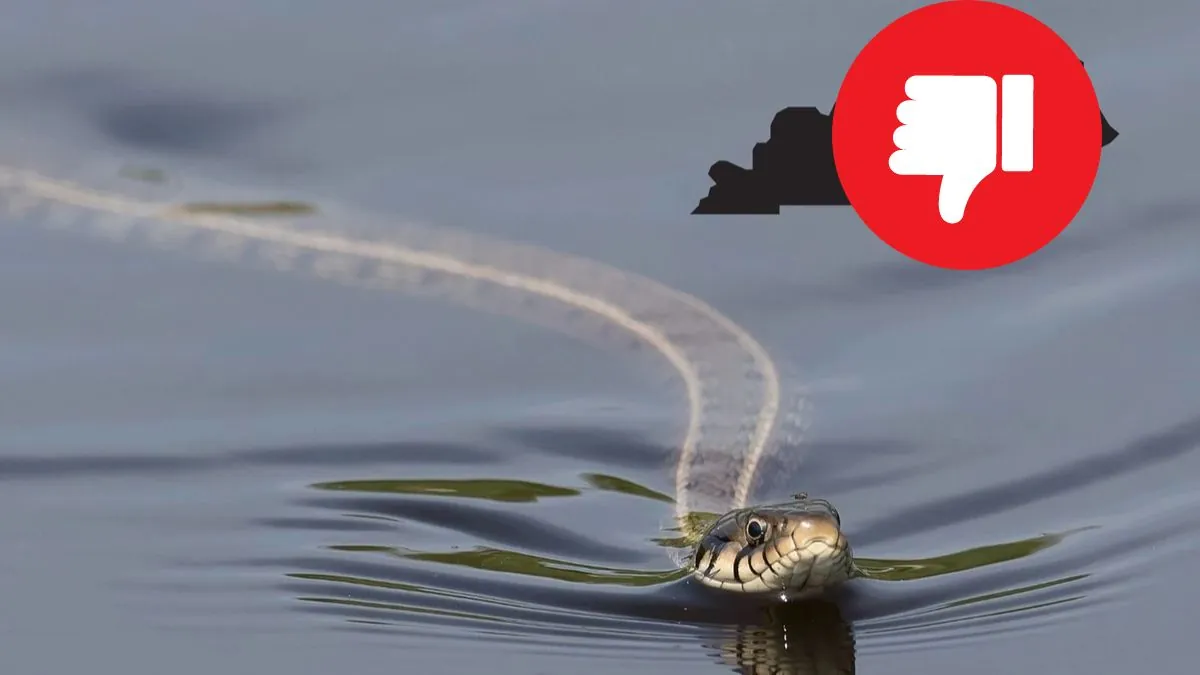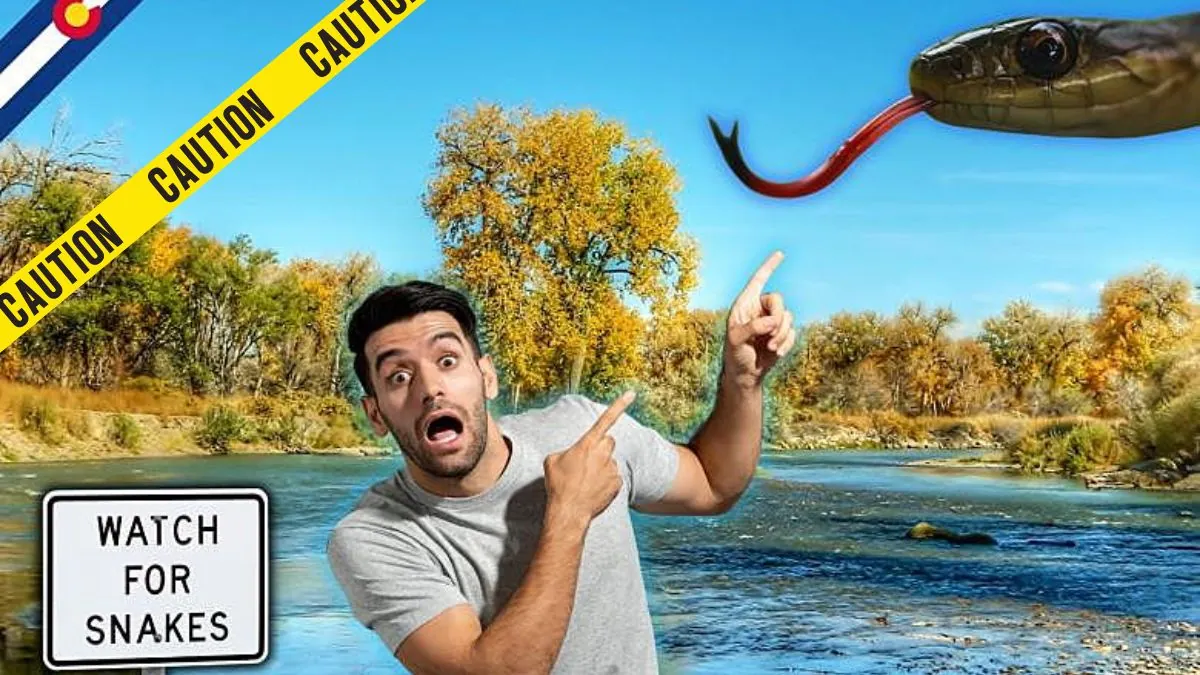New Jersey, often called the “Garden State,” is known for its diverse landscapes, ranging from bustling urban areas to tranquil lakes and woodlands. While these natural settings offer a haven for wildlife enthusiasts, they also come with their share of surprises. Among these are the various species of snakes that inhabit the state, some of which have made specific lakes their homes. In this article, we explore the top five most snake-infested lakes in New Jersey in 2024, providing detailed insights into the types of snakes you might encounter, safety tips, and the ecological significance of these reptiles.
1. Lake Hopatcong

Overview
Lake Hopatcong, the largest freshwater body in New Jersey, is a popular destination for boating, fishing, and swimming. However, its extensive shoreline and rich aquatic life have also made it a prime habitat for several snake species.
Snake Species
The most common snake species found in Lake Hopatcong include the Northern Water Snake (Nerodia sipedon), Eastern Garter Snake (Thamnophis sirtalis), and occasionally the Eastern Copperhead (Agkistrodon contortrix), a venomous species. The Northern Water Snake, in particular, thrives here due to the abundance of fish and amphibians.
Snake Encounters
In 2024, there have been numerous reports of snake sightings around the lake, especially in the warmer months when these reptiles are most active. Boaters and anglers have reported seeing water snakes basking on rocks or swimming near the shore. While these snakes are generally non-aggressive, their presence can be alarming to those unfamiliar with them.
Safety Tips
Visitors to Lake Hopatcong are advised to wear closed-toe shoes when walking along the shoreline and to avoid disturbing rocks or logs where snakes might be hiding. If you encounter a snake, it’s best to observe it from a distance and allow it to move away on its own.
Ecological Importance
Snakes play a crucial role in controlling the populations of small mammals, fish, and amphibians around Lake Hopatcong. Their presence indicates a healthy ecosystem, and efforts should be made to protect their habitats.
2. Round Valley Reservoir
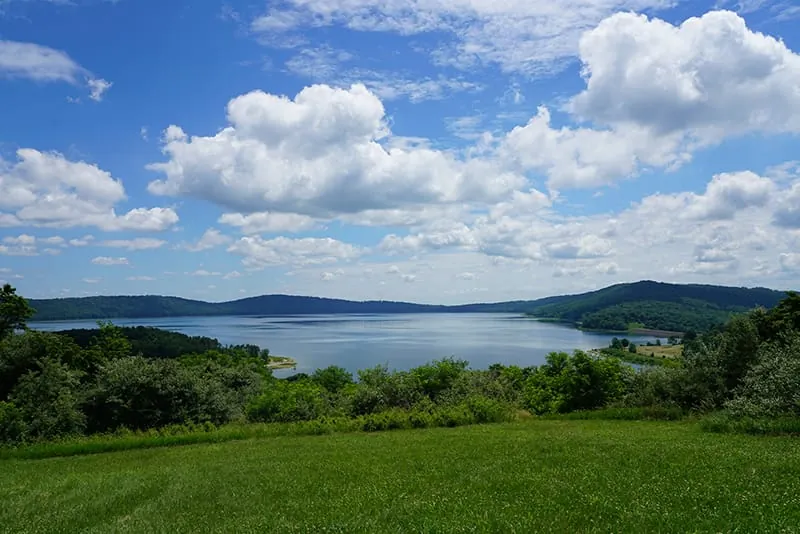
Overview
Located in Hunterdon County, the Round Valley Reservoir is a deep, clear lake known for its excellent fishing opportunities and scenic hiking trails. However, it is also home to a variety of snake species, making it one of the more snake-populated lakes in the state.
Snake Species
The Round Valley Reservoir is inhabited by species such as the Eastern Ribbon Snake (Thamnophis sauritus), Northern Black Racer (Coluber constrictor), and the Timber Rattlesnake (Crotalus horridus), the latter being a state-threatened species. The Timber Rattlesnake is rarely seen but has been documented in the surrounding woodlands.
Snake Encounters
In 2024, hikers and campers around the reservoir have reported increased snake sightings, particularly near the water’s edge and in the dense underbrush along the trails. The Eastern Ribbon Snake, known for its slender body and quick movements, is commonly spotted darting through the grass near the lake.
Safety Tips
To minimize the risk of snake encounters, visitors should stick to well-maintained trails and avoid venturing into tall grass or dense undergrowth. Carrying a walking stick can help to gently probe areas ahead, ensuring you don’t startle any hidden snakes.
Ecological Importance
The presence of snakes like the Timber Rattlesnake underscores the ecological diversity of the Round Valley Reservoir. These snakes contribute to the balance of the ecosystem by controlling rodent populations, which in turn helps to preserve the local vegetation.
3. Swartswood Lake
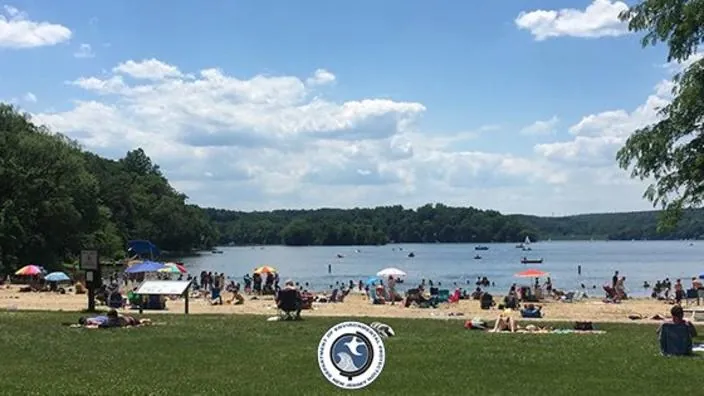
Overview
Swartswood Lake, located in Sussex County, is the third largest freshwater lake in New Jersey and a favorite spot for outdoor enthusiasts. Its calm waters and surrounding wetlands create an ideal environment for various snake species.
Snake Species
The lake is home to the Eastern Milk Snake (Lampropeltis triangulum), Northern Water Snake, and the less common Queen Snake (Regina septemvittata). The Queen Snake, in particular, is noteworthy as it is often found near water and feeds primarily on crayfish.
Snake Encounters
In recent years, there has been a noticeable increase in snake sightings at Swartswood Lake. Fishermen and kayakers have reported seeing Northern Water Snakes swimming near the shoreline, while the Queen Snake has been spotted basking on overhanging branches.
Safety Tips
Visitors should be cautious when wading in the shallow waters or exploring the marshy areas around the lake. It’s advisable to wear long pants and boots to reduce the risk of snake bites, particularly in areas with tall grass or thick underbrush.
Ecological Importance
Swartswood Lake’s snakes play an essential role in maintaining the balance of the aquatic ecosystem. By preying on crayfish and small fish, they help control these populations, which in turn supports the overall health of the lake.
4. Merrill Creek Reservoir

Overview
Merrill Creek Reservoir, located in Warren County, is a man-made lake surrounded by preserved woodlands and wildlife areas. While it’s a haven for bird watchers and hikers, it is also a habitat for several species of snakes.
Snake Species
Among the snakes found here are the Eastern Garter Snake, Northern Water Snake, and the Eastern Rat Snake (Pantherophis alleghaniensis). The Eastern Rat Snake, known for its impressive size, is often found in the forested areas surrounding the reservoir.
Snake Encounters
2024 has seen an uptick in snake sightings at Merrill Creek, particularly during the spring and summer months. Hikers have reported encountering Eastern Rat Snakes crossing trails, while Northern Water Snakes are frequently seen along the water’s edge.
Safety Tips
When exploring the reservoir’s trails, it’s important to remain vigilant and watch where you step, especially in areas with dense foliage. Snakes are typically shy and will avoid human contact, but it’s best to give them plenty of space to retreat.
Ecological Importance
The snakes of Merrill Creek Reservoir contribute to the biodiversity of the area, controlling populations of rodents and other small animals. Their presence is a sign of a healthy ecosystem, and they should be respected as an integral part of the environment.
5. Manasquan Reservoir

Overview
The Manasquan Reservoir, located in Monmouth County, is a popular destination for recreational activities, including fishing, kayaking, and bird watching. However, its marshy edges and wooded surroundings also make it a hotspot for snakes.
Snake Species
Common snakes in the Manasquan Reservoir area include the Northern Water Snake, Eastern Garter Snake, and the Northern Brown Snake (Storeria dekayi). The Northern Brown Snake, a small, secretive species, is often found under rocks and logs near the water.
Snake Encounters
In 2024, there have been several reports of snake sightings, particularly Northern Water Snakes basking on rocks or swimming near the shore. The Northern Brown Snake is less frequently seen but has been encountered by hikers in the wooded areas surrounding the reservoir.
Safety Tips
Visitors are advised to be cautious when exploring the marshy areas and to avoid lifting rocks or logs, as these are common hiding spots for snakes. Wearing appropriate footwear and staying on designated trails can help reduce the risk of snake encounters.
Ecological Importance
The Manasquan Reservoir’s snakes are important for maintaining the balance of the local ecosystem. By preying on small animals, they help control populations that could otherwise become overabundant, contributing to the health of the reservoir’s environment.
Why Snakes Thrive in New Jersey’s Lakes
Climate and Habitat
New Jersey’s climate, with its warm summers and relatively mild winters, provides an ideal environment for snakes. The state’s lakes, with their abundant food sources and varied habitats, offer snakes plenty of opportunities to thrive. Wetlands, marshes, and forested areas around these lakes provide the cover and prey that snakes need to survive.
Human Impact
As more people visit and develop areas around New Jersey’s lakes, snake encounters have become more common. While some people view these reptiles with fear, it’s important to remember that snakes play a vital role in the ecosystem. Education and awareness are key to reducing negative interactions between humans and snakes.
Conservation Efforts
Several snake species in New Jersey, such as the Timber Rattlesnake, are protected due to their declining populations. Conservation efforts focus on preserving their habitats and educating the public about the importance of snakes in maintaining ecological balance. By protecting these species, we also protect the health of New Jersey’s lakes and surrounding environments.
Conclusion
New Jersey’s lakes are more than just recreational hotspots—they are vital ecosystems teeming with diverse wildlife, including a variety of snake species. While the thought of encountering a snake might be unsettling to some, understanding their role in the environment can foster a greater appreciation for these often misunderstood creatures.
As we’ve explored, the top five most snake-infested lakes in New Jersey in 2024—Lake Hopatcong, Round Valley Reservoir, Swartswood Lake, Merrill Creek Reservoir, and Manasquan Reservoir—offer unique habitats that support healthy snake populations. By respecting these reptiles and taking precautions during outdoor activities, visitors can enjoy the natural beauty of these areas while coexisting peacefully with the wildlife that calls them home.
Whether you’re a nature enthusiast, a hiker, or just someone who enjoys a day by the lake, being informed about the presence of snakes and their importance to the ecosystem can enhance your experience and ensure that New Jersey’s natural treasures are preserved for future generations.
This Article Includes

